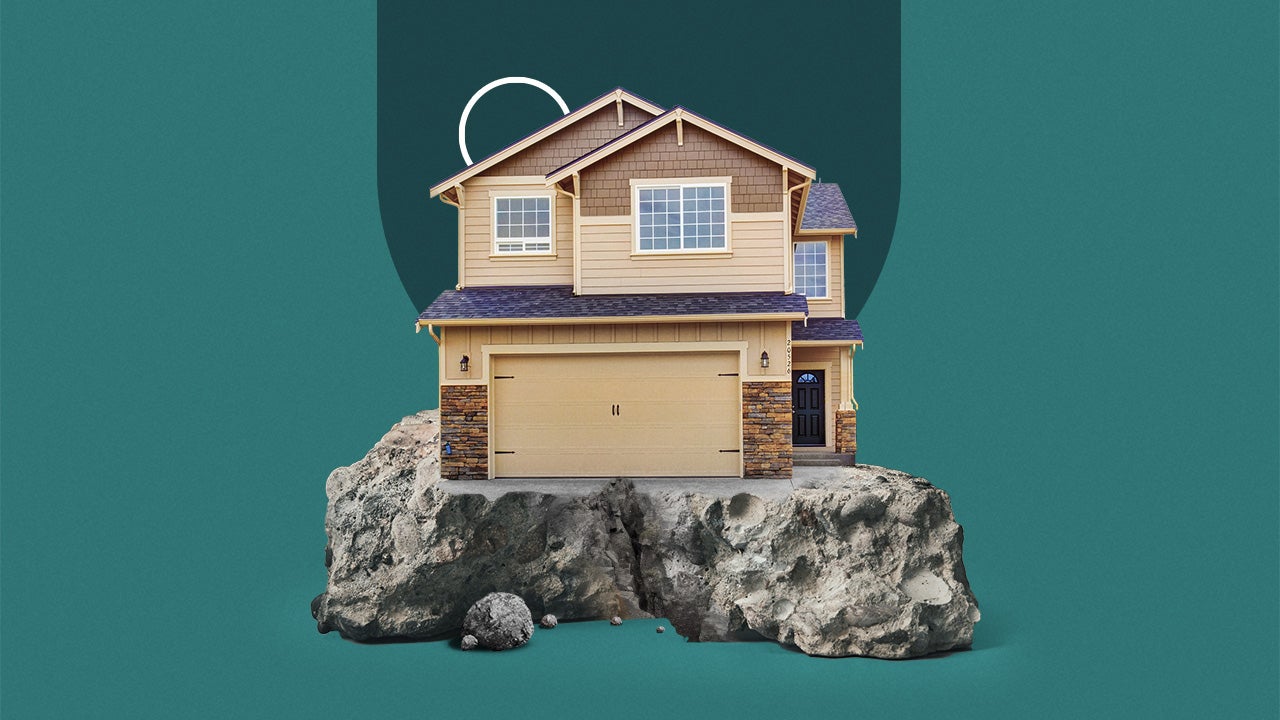Housing market predictions for the rest of 2025

Key takeaways
- Industry experts expect the remainder of 2025 to remain challenging for the U.S. housing market.
- Would-be homebuyers continue to be discouraged by elevated mortgage rates and ever-rising home prices.
- In addition, while housing inventory keeps growing, it’s still below the level needed for a balanced market.
The housing market in the second half of 2025 might have a more favorable outlook than much of 2024 had, especially if mortgage rates improve. There’s still plenty of uncertainty in the air, though: Rising prices and slowing construction could cause some trouble for buyers. And the ongoing impact of tariffs remains a wild card.
Home prices, mortgage rates, inventory levels and more will all shape housing affordability throughout the rest of the year. Curious where these trends may go? Read on to learn what the experts predict for the remainder of the 2025 housing market.
What will happen to the housing market in 2025?
After dipping as low as 6.2 percent in September 2024, the average 30-year mortgage rate rose back above 7 percent in early 2025. Previous predictions of lower rates in 2025 have shifted, with experts now predicting rates will moderate but not necessarily decrease in a substantial way. Indeed, rates remain only just below that 7 percent threshold — 6.78 percent as of early July — indicating that affordability is likely to be a continuing issue for the rest of 2025.
Continued economic growth and worries about inflation and government debt will keep mortgage rates elevated.— Greg McBride, CFA, chief financial analyst for Bankrate
“The average 30-year fixed mortgage rate will spend most of the year in the 6s, with a short-lived spike above 7 percent, but never getting below 6 percent,” Greg McBride, chief financial analyst for Bankrate, said in his 2025 mortgage rates forecast. “Continued economic growth and worries about inflation and government debt will keep mortgage rates elevated.”
Housing inventories, though, actually have been improving of late, with a 4.6-month supply in May, according to existing-home-sales data from the National Association of Realtors (NAR). While that is still below the 5 to 6 months typically needed for a balanced market, it’s a significant 20.3 percent improvement from a year ago.
Political implications
On top of typical housing concerns, there’s also the question of how the Trump administration’s evolving policies could impact housing. “Investors are anticipating that if Donald Trump implements a significant portion of his proposed tax cuts and tariffs, and the economy stays strong, the Fed will only cut its policy rate twice in 2025, keeping mortgage rates high,” Redfin economists Daryl Fairweather and Chen Zhao said in their 2025 predictions. The Fed has yet to cut rates so far this year, though.
As for new construction, they said, “the Republican sweep of the White House, Senate and House has improved builder confidence by bringing renewed optimism that regulatory burdens may ease.” However, the confusion surrounding tariffs, and the potential increases to building-material costs, have many people worried — including builders.
- The median home-sale price in the U.S. as of May 2025 was $422,800, according to NAR. That’s an all-time high for the month and marks 23 consecutive months of year-over-year home-price increases.
- The nation had a 4.6-month supply of housing inventory as of NAR’s May data, up from 3.8 months one year ago. The increase gives buyers more flexibility, but many areas are still in a seller’s market.
- Home-price growth increased in April 2025 by 2.7 percent, according to the latest Case-Shiller Index.
- Bankrate’s latest national survey of large lenders shows the average rate on a 30-year mortgage was 6.78 percent as of July 9, 2025.
- The U.S. inflation rate as of May 2025 was 2.4 percent — up a bit from 2.3 percent in April and still not quite at the Fed’s goal of 2 percent.
Will home sales decline?
NAR’s existing-home sales numbers fell year-over-year in May, but only by 0.7 percent. Last year saw many buyers staying on the sidelines, anticipating lower mortgage rates, and despite earlier hopes from economists, it appears that is not changing yet. “Home sales have been at 75 percent of normal or pre-pandemic activity for the past three years, even with seven million jobs added to the economy,” said NAR chief economist Lawrence Yun in a statement. “Pent-up housing demand continues to grow, though not realized. Any meaningful decline in mortgage rates will help release this demand.”
Homebuying activity in 2025 is likely to remain sluggish. “The prospect of elevated mortgage rates throughout 2025 suggests that housing market activity will continue to be challenged,” says Selma Hepp, chief economist for real estate data firm Cotality. “Lack of affordability and continuation of the lock-in effect will keep sellers on the sidelines.”
Will housing inventory increase?
Inventory has, in fact, been rising — but that’s not necessarily a sign of health. “Sluggish home sales have inventory of homes piling up in many areas, not because droves have put their homes on the market as much as it is just taking longer to sell,” says McBride.
Sluggish home sales have inventory of homes piling up in many areas.— Greg McBride, CFA, chief financial analyst for Bankrate
The National Association of Home Builders (NAHB) regularly surveys builders for its monthly Housing Market Index (HMI). The HMI data released in June found that builder confidence remains low, dropping two points from the previous month and hitting its third-lowest mark since 2012. “Buyers are increasingly moving to the sidelines due to elevated mortgage rates and tariff and economic uncertainty,” said NAHB chairman Buddy Hughes in a statement.
Will home prices go down?
The median sale price for an existing home in the U.S. hit a record-high $426,900 in June 2024, according to NAR. While it dipped due to seasonality over the winter, May 2025’s median of $422,800 set a record for the month and is just a few thousand dollars off that all-time high. These rising prices are likely to continue through the rest of 2025 — but, hopefully, at a slower pace.
Hepp predicts that home-price appreciation will slow to an average growth of 2 percent for 2025, as compared to 4.5 percent growth in 2024. Markets with greater inventory are the ones most likely to see home prices drop, she adds, while popular regions with less new inventory, particularly in the West and Northeast, will continue to see steady price increases.
“Nevertheless, understanding the new reality of higher mortgage rates may help bring buyers off the sidelines who can no longer postpone their purchase and are ready and able to make the move,” says Hepp.
McBride agrees that, while prices on a national basis are not likely to go down in 2025, they won’t rise quite as much: “Home-price appreciation will be tepid, when looked at from 35,000 feet, with many markets seeing little or no change in prices,” he says. “But rising inventory has some formerly hot real estate markets shifting from a seller’s market to a buyer’s market, and will be susceptible to price declines.”
Still, you may be able to find a deal in specific instances, including with new-construction homes. For instance, 37 percent of builders cut home prices in June, according to the NAHB, with an average price reduction of 5 percent. Along with that, 62 percent of builders offered sales incentives to buyers.
Will 2025 be a buyer’s or seller’s market?
The answer will depend on the local market conditions in your area. The good news is that inventories and demand appear to be coming more into balance as a whole. According to McBride, “Areas with limited inventory will still lean toward a seller’s market. However, those markets that have seen a surge in inventory will definitely be more of a buyer’s market.”
Rising inventory has some formerly hot real estate markets shifting from a seller’s market to a buyer’s market.— Greg McBride, CFA, chief financial analyst for Bankrate
Says Hepp, “many regions remain significantly undersupplied, making it difficult to experience a buyer’s market.”
Bottom line
The continued combination of high mortgage rates, steep home prices and insufficient inventory levels points to the rest of 2025 remaining tough for buyers and sellers. However, buyers may eventually stop holding out for lower rates and accept “the new normal.” This could result in more movement in the market in 2025 than there was in 2024.
The complexities of the current conditions mean that, now more than ever, it’s smart to lean on the guidance of an experienced local real estate agent. If you want to enter the housing market in 2025, whether as a buyer or a seller, let a seasoned pro lead the way for you.
FAQs
Why we ask for feedback Your feedback helps us improve our content and services. It takes less than a minute to complete.
Your responses are anonymous and will only be used for improving our website.






